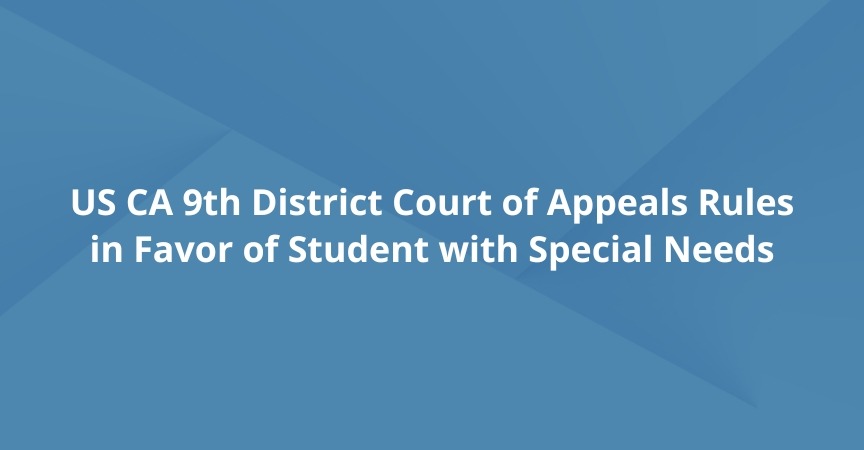On December 20, 2022, the 9th Circuit ruled in favor of a student with special needs to be educated in the general education setting along with his non-disabled peers.
“This is a huge victory for the student’s side as many IEP students are pushed out of gen-ed for the very reason ‘they can’t do the work’”, says Jennifer Chang, Special Education Attorney.
The Individuals with Disabilities Education Act (IDEA) is a law that “makes available a free appropriate public education to eligible children with disabilities throughout the nation and ensures special education and related services to those children.” Part of IDEA’s requirement is that children with disabilities be educated in the “least restrictive environment” alongside their non-disabled peers “to the maximum extent appropriate.”
Factors for consideration of what is appropriate and least restrictive include:
- A comparison of academic benefits a child might receive from placement in the regular education classroom
- Non-academic benefits from being educated in the regular education classroom (such as social skills and communication skills)
- Any potential negative effects a child with a disability’s presence in the room might have on the education of other students
- The cost to the school district for providing aids and services to educate that child in a regular education classroom
What is Least Restrictive Environment (LRE)?
For parents and schools, finding the least restrictive environment for a child means extending access to regular education. Whether your child is in public or private school, schools must allow them to spend as much time as possible during the school day with their non-disabled peers.
LRE means that special classes, separate schooling, or removal of a child with disabilities from the regular education environment can (and should) only occur when the use of any aids or services cannot be achieved “satisfactorily” in that regular education classroom.
What Can This Ruling Mean For You?
One of the most essential parts of this ruling highlights the idea that a satisfactory education does not mean a “one-size-fits-all” education. Grade-level performance is not always the appropriate benchmark for all children with disabilities.
Many children with developmental disabilities may not perform at the same academic level as their peers. However, studies show marked academic benefits and progress towards their individual goals that were established in their IEP when placed in the regular education classroom setting among their friends and peers.
In this particular court ruling, one child’s family was able to show undisputed evidence that their child was making substantial progress on his academic goals and had made connections with other students in the class. He was showing increased social skill development among his peers. He also, in no way, had a negative effect on the education of other students in the classroom.
In the end, IDEA ensures that your child can only be placed in a more restrictive environment if “education in regular classes with the use of supplementary aids and services cannot be achieved satisfactorily”. A school district, whenever feasible, must push support services into the regular classroom with the student, rather than pull the student out of it.
Here’s How We Can Help
For assistance securing educational support for your child, contact the Law Offices of Jennifer Chang, education rights attorney. Jennifer works vigorously to protect the rights students have to a free and appropriate education under both federal and state laws, such as the IDEA, Section 504 of the Rehabilitation Act of 1973, and Title II of the Americans with Disabilities Act.
Helpful Links:
